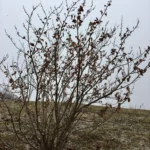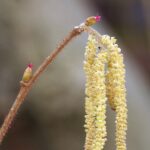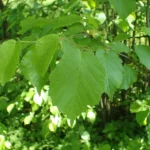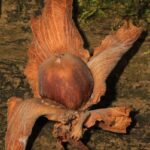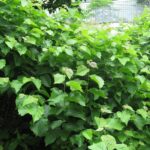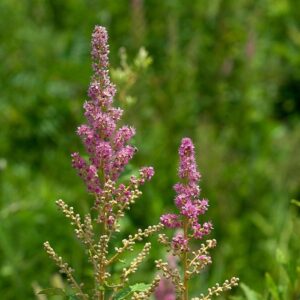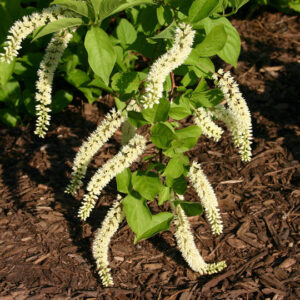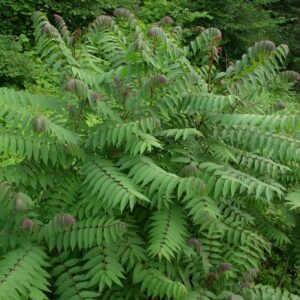Hazelnut is a rounded multi-stemmed native deciduous shrub with edible nuts that taste similar to European filbert. The double toothed dark green leaves turn various colors in fall, from combinations of orange, rose, red, yellow, and green. In spring bloom the long yellow brown male catkins that persist into fall and inconspicuous small red female flowers. Female flowers give way to edible nuts encased in hairy, leafy husk-like bracts. Grows best in rich, moist, well-drained soils.
| Type: | Shrub |
| Origins: | Eastern N. America; GA Native |
| Height: | 10’ – 16’ |
| Spread: | 8’ – 13’ |
| Spacing: | 10’ |
| USDA Hardiness Zone: | 4 – 9 |
| Culture: | Full Sun, Part Sun |
| Bloom Color: | Brown (male), Red (female) |
| Season of Interest: | Spring, Fall |
MAINTENANCE NEEDS: Low Maintenance. Prompt removal of root suckers will help maintain plant appearance and help prevent thicket formation. Susceptible to Eastern Filbert blight. Some susceptibility to leaf spot, blight, and crown gall. Occasional pests include leafhoppers, scale, and caterpillars.
LANDSCAPE USES: Accents or Group Plantings, Borders, Woodland Gardens, Naturalized Areas, Wildlife Gardens, Foundation Plantings, Hedges and Containers..
COMPANION PLANTS: Viburnum, Forsythia, Hydrangea
IMAGES: Photo by Cranbrook Science, American Filbert (Hazelnut), (2) Krzysztof Ziarnek, Kenraiz, Corylus americana kz01, CC BY-SA 4.0, (3) Superior National Forest, Corylus americana 1-eheep (5098096972), CC BY 2.0, (4) Melissa McMasters from Memphis, TN, United States, Hazelnut (25333137603), CC BY 2.0, (5) Judy Gallagher, American Hazelnut – Corylus americana, Watkins Regional Park, Upper Marlboro, Maryland (38562356145), CC BY 2.0, (6) Photo by Kristine Paulus, branches, CC BY 2.0, (7) Plant Image Library, Corylus americana (American Hazelnut, American Filbert)
*As plants have ranges in appearance they may not appear as the images shown.



